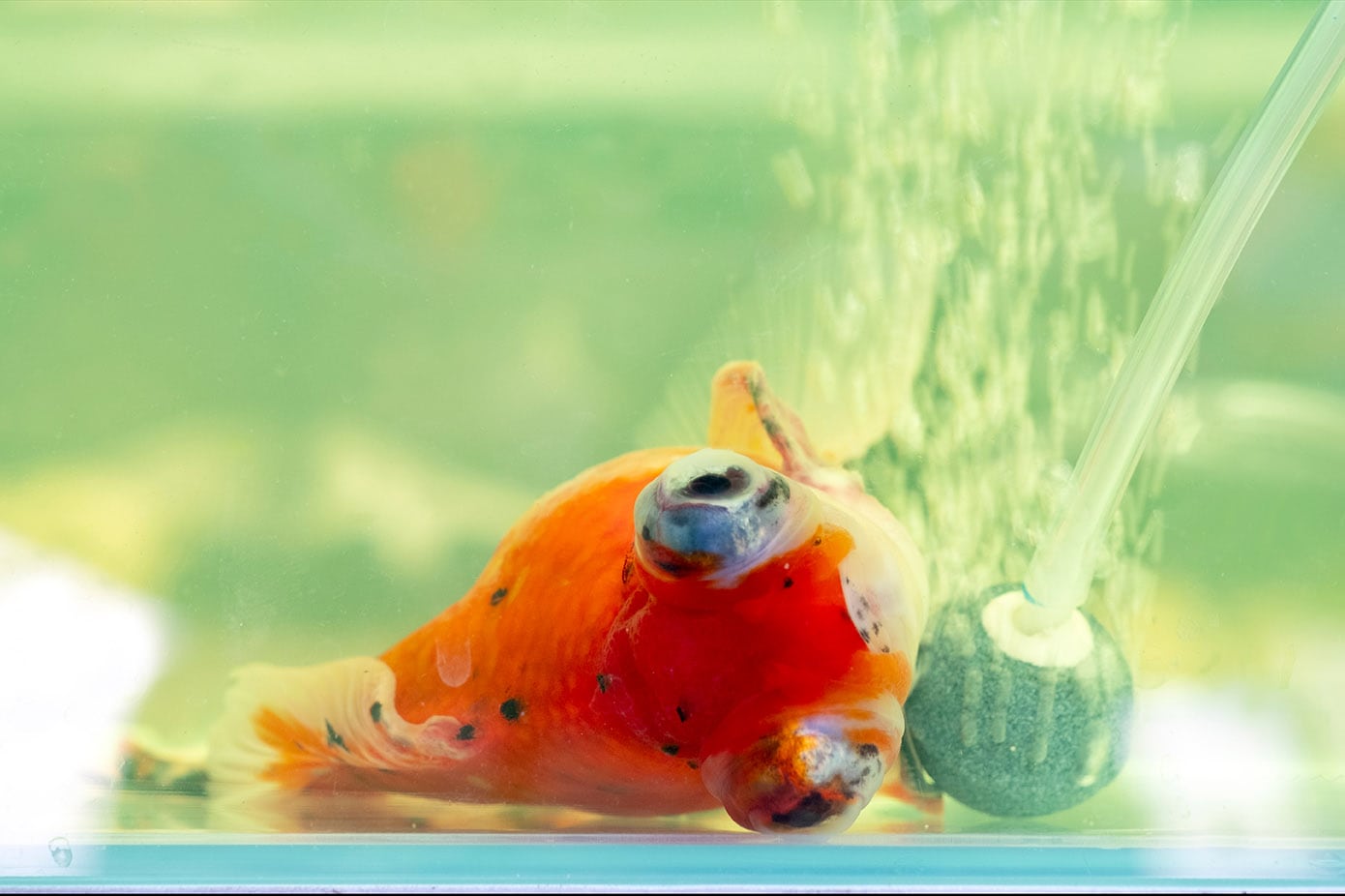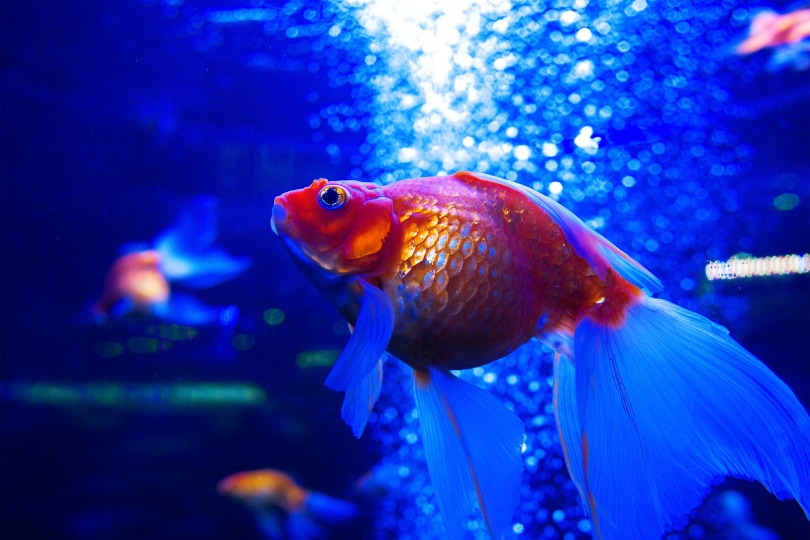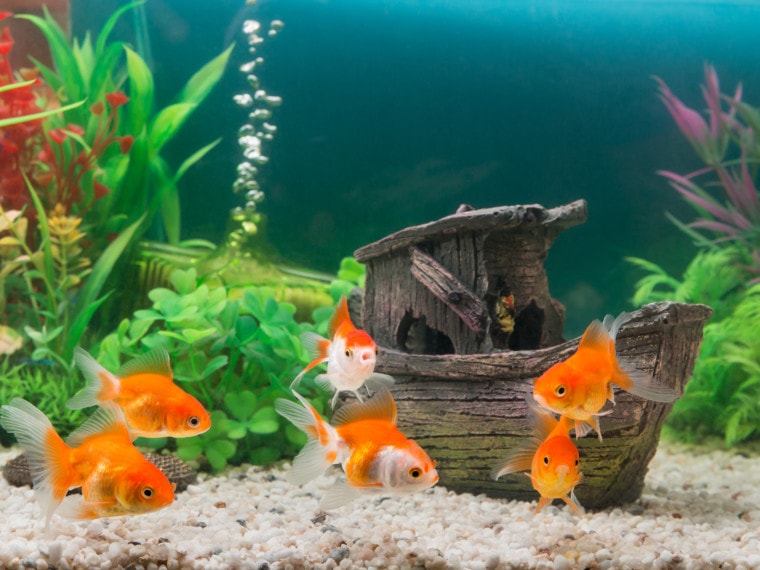
Whether you’re new to the goldfish world or have been keeping goldfish for decades, you’ve likely heard some rule of thumb describing the tank size that goldfish require. The two most common seem to be 1 gallon for every 1 inch of fish and 20 gallons for a single fish with 10 gallons added for each additional fish. You may have even encountered people who accused you of abuse or encouraged you to get rid of your goldfish when they found out you’re keeping a goldfish in a 10-gallon tank.
The good news for you is that those “rules” are outdated and not based on science, but for some people, that makes it even more confusing to figure out what size tank to get for a goldfish. The simplest answer to this question is that when buying a tank for goldfish, spring for the largest tank you can afford; a 55-gallon tank should be considered the minimum for about 3 fancy goldfish or a single common variant.
Here are the things you should know about the importance of tank size for goldfish.
How Important Is Tank Size for Goldfish?
Tank size is incredibly important for goldfish. Contrary to popular belief, goldfish do not do well in bowls or small aquariums. There are several reasons why goldfish should be placed in as large a tank as possible:
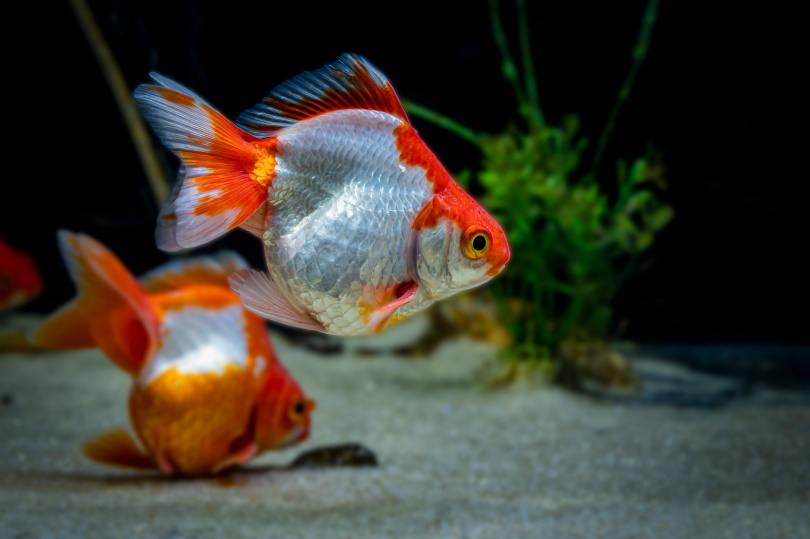
Even more important than tank size is how well you are taking care of your fish and their environment. Staying on top of routine water changes, maintaining a good filtration system, a healthy diet, and enriching your goldfish’s environment are all key to ensure their well-being.
Part of the confusion pet owners face is that they often see fish kept in very small aquariums in pet stores, and they think they can replicate these systems at home successfully. This is a major misconception. The filtration systems pet stores use to house their fish are exceptionally strong and severely over-filter their holding tanks. Pet shops also often don’t feed their fish as frequently as those who keep fish as pets. Therefore, their fish often produce less waste too.
Despite having such strong filtration systems and strict feeding protocols in place, pet stores still lose stock in the form of mortality on a near-daily basis. Their systems are not meant to be used as long-term housing for fish. Therefore, it is not advisable to try and replicate these systems in your home unless you are an experienced fish keeper.
What Does My Goldfish’s Tank Need?
Filtration
Goldfish produce a high bioload, which means their waste products build up rapidly, even in large tanks. A filter that is rated for tanks larger than the tank your goldfish lives in (at least double your tank’s volume) is going to be your best bet for proper filtration. You aren’t going to over-filtrate the water, but you absolutely can under-filtrate the water.
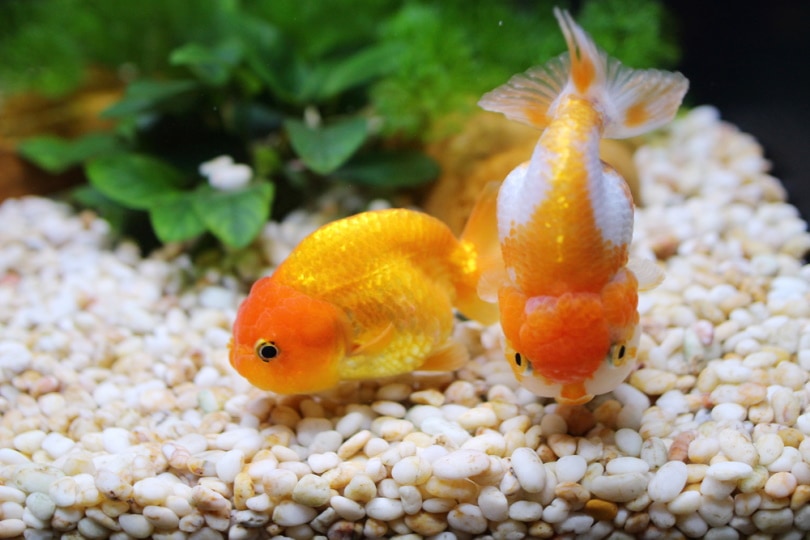
Swimming Space
Goldfish enjoy swimming long lengths, which means they do best in long tanks versus tall tanks. Rectangular tanks usually make the best tanks for goldfish, although some cube-shaped tanks can work well. Round bowls and tanks usually do not provide much long swimming space. You should also consider the other things you are adding to the tank. If your goldfish is in a small bowl and you add in a filter, plants, and décor, then you’ve eliminated essentially all of the swimming space in your fish’s environment.
Enrichment
You wouldn’t want to live in a room with four blank walls and nothing to do, and neither does your goldfish! These social fish need entertainment and enrichment, which can be achieved with air stones, plants, and various types of décor. Introducing novel items from time to time will keep things interesting, and goldfish will never turn down an interesting snack.

What’s the Most Important Aspect of My Goldfish’s Tank?
It cannot be stressed enough that maintaining water quality is the top priority for goldfish keeping. Your filter can only do so much of the work for you! Invest in an accurate water testing kit that allows you to monitor your tank’s parameters, like ammonia and nitrite, to ensure the water quality is staying in tip-top shape. The smaller the tank or the more goldfish in the tank, the more frequently you’ll need to perform water changes to keep parameters in check. If your goldfish is in a small bowl or tank, you’ll need to perform very frequent water changes, sometimes even daily, to maintain the water quality. Not everyone has the time to dedicate to daily water changes, and daily water changes can add unnecessary stress for your fish too. This is why larger tanks are recommended; not only are they easier to manage, but it’s cruel to place your fish in an environment so small where water quality degrades in just a day. When placed in a small environment, your goldfish will inevitably suffer from the effects of poor water quality.
Housing a goldfish isn't as simple as buying a bowl. If you're a new or experienced goldfish keeper who wants to get the setup right for your goldfish family, check out the best-selling book, The Truth About Goldfish, on Amazon. It covers all you need to know about the ideal tank setup, tank size, substrate, ornaments, plants, and so much more!
How Many Goldfish Can I Keep in a Tank?
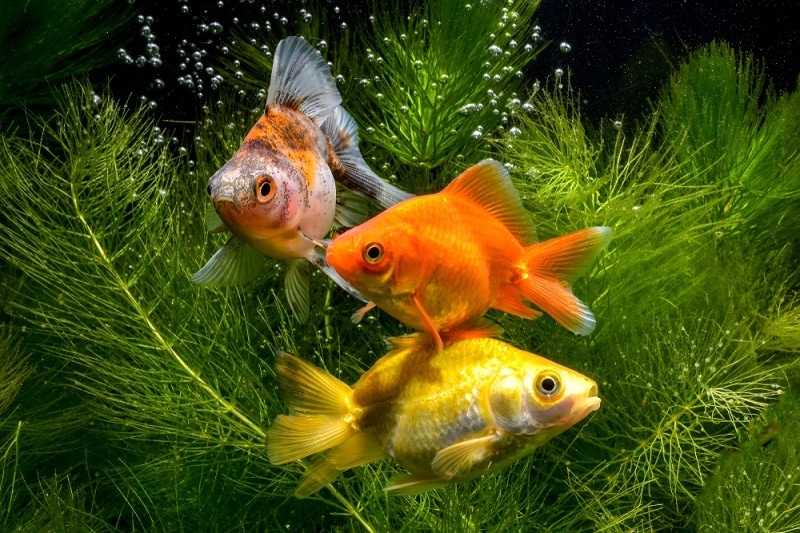
The following tank sizes are recommended for goldfish.

Final Thoughts
Goldfish are social, messy fish that require large amounts of space. Therefore, it is important to house them in large aquariums. A 55-gallon aquarium can comfortably accommodate around 3 fancy goldfish (provided it has enough filtration as well). Common varieties of goldfish require much more space; a 90-gallon aquarium is recommended for 3 common goldfish. Though goldfish have no issues getting along in greater numbers, you must ensure that their tank can accommodate such additions.
Featured Image Credit: luckypic, Shutterstock




